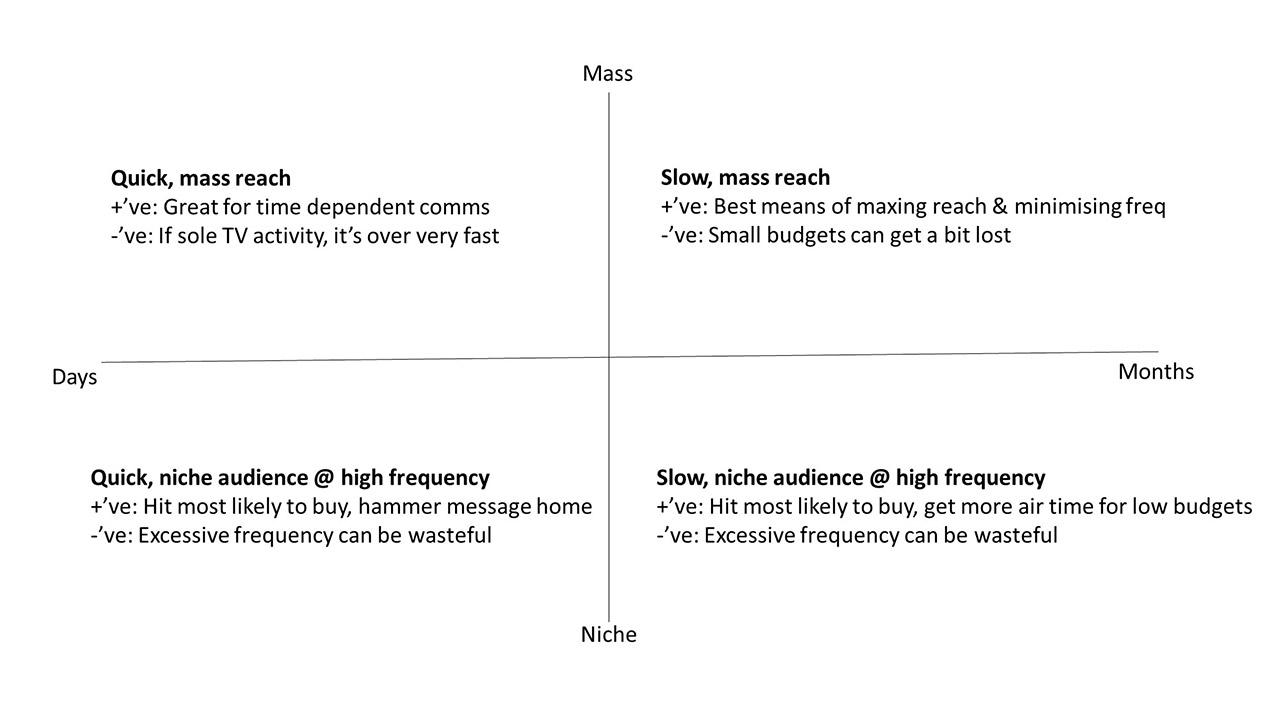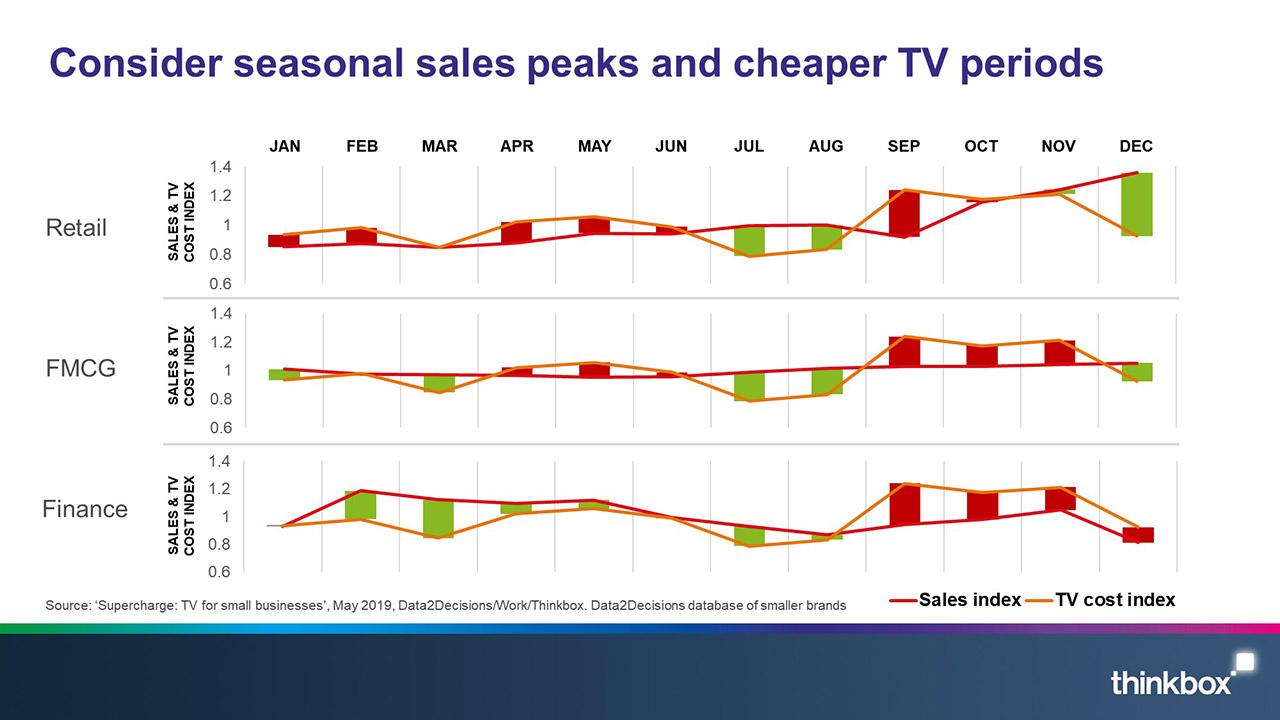Having chosen a partner to work with, your TV strategy will be worked through in conjunction with the media agency or broadcaster you have partnered with. This section provides a bit of guidance for the types of decisions that need to be made and what the principle factors are that need to be considered when advertising on TV.
1. Consistent presence or highly visible one-off burst?
Byron Sharp, who wrote the marketers’ bible ‘How Brands Grow’, advises advertisers to “continuously reach all buyers of the brand’s service / product category, with both physical distribution and marketing communication.” In theory, this makes absolute sense, but in practice, budgets tend to get in the way. The reality is advertisers need to make a decision on how to most effectively spend their budget, with the key trade offs being between the volume of people that are reached and how long the campaign is on air for. The diagram below sums up the 4 options available in this aspect of a TV plan.

Depending on your particular situation, any of these 4 options might be the right strategy for you, but according to research from data2decisions (a specialist consultancy who evaluate the impact advertising has on sales), the best approach is to build awareness of your brand amongst as many of your target market as possible.
From a measurement point of view, it makes sense to deliver the campaign over a relatively short period of time, as it then becomes easier to assess the impact it has had on generating sales.
The size of your budget is going to be the biggest factor in the decision. The bigger your budget is, then the more it makes sense to spread it out over a slightly longer period of time. Just be careful not to spread it too thinly, so it becomes impossible to measure the impact.
2. When should I advertise?
The best time of year to advertise on TV will differ dependent upon your brand. TV is priced on a supply and demand basis, so the cost of advertising on TV will differ by time of year. For example, TV is most expensive in November in the run up to Christmas because demand is very high.

This chart from our ‘As Seen on TV’ study shows when the most cost effective times of year are for a few different categories, taking into account a) when the seasonal sales peaks are for each specific category, and b) the differing cost of TV by month. If your budget is limited, you should choose the most cost-effective month and plan a high reaching burst campaign.
3. What audience should I buy?
When you buy TV advertising space, you buy a specific target audience I.e. Women, 16-34s, ABC1s and so on. As it’s not possible through standard TV spot advertising to only target the audience you’re buying, your ad will also be seen by people outside of this audience. This is one of the benefits of linear TV advertising, as these people are completely free, but may still be interested in your product.
The broader your audience is, then the lower the cost per thousand is (see How to calculate CPTs). The smaller your audience is, then the more expensive your CPT is i.e. buying 16-34s is roughly £30 per thousand, whilst All Adults is roughly £6 per thousand.
The broadcasters also only allow advertisers who are buying certain audiences into programmes that perform particularly well for valuable / sought-after audiences. For example, in order to advertise within Love Island on ITV2, you would need to buy 16-34s.
It’s also possible to access lower cost inventory on TV through buying daytime only or smaller audience channels. This inventory is known as Direct Response TV as it tends to be used by advertisers who are running ‘activation’ or ‘response’ type creative, which is very call to action based. This type of inventory can be a good starting point for advertisers and often the best way to test and learn what type of audience, programmes, and time of day you should advertise to / within.
4. What other factors should I consider?
One of the benefits of advertising on TV is that there is a huge amount to play with when it comes to campaign planning. You can choose to advertise within specific time slots or days of week. FMCG advertisers like to advertise early in the morning before people do their shopping, whereas insurance advertising tends to work well on Sundays as this is when people are most likely to do their life admin. As always, test and learn what works best for your business and upweight these areas.
Different programmes have different types of audience e.g. Shop Smart, Save Money on Channel 5 will be a great place to advertise any new tech products, cooking shows are a great place to advertise food.
Find the right kind of show for your brand as this will increase the efficiency of your advertising.
 Thinkbox
Thinkbox
